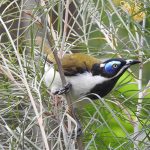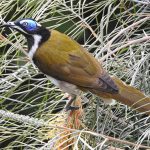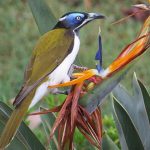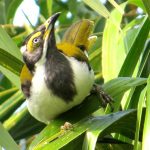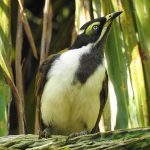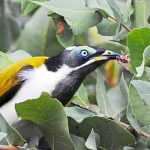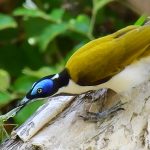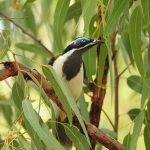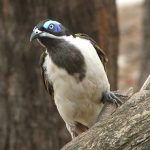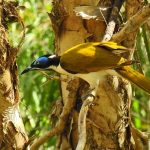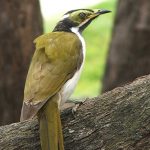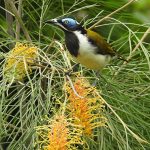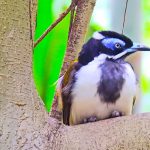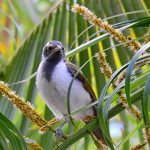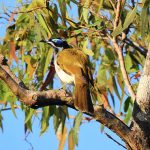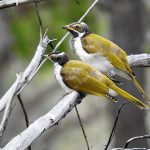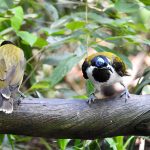BLUE-FACED HONEYEATER
The Blue-faced Honeyeater is a medium-sized bird, measuring around 25-30 cm in length. It has a black head with a vibrant blue patch of bare skin around its eyes and upper throat. The rest of its plumage is olive-green on the upperparts and yellow on the underparts. It also has a long, curved beak.
The Blue-faced Honeyeater is endemic to Australia and can be found in various parts of the country. Its range extends from the northern parts of Western Australia and the Northern Territory, through Queensland and New South Wales, to the eastern coast of Victoria.
This species is highly adaptable and can be found in a variety of habitats, including woodlands, open forests, mangroves, gardens, and parks. It is often associated with water sources, such as rivers, wetlands, and coastal areas.
They have a diverse diet feeding primarily feed on nectar from a wide range of flowering plants, using their brush-tipped tongues to extract the nectar. They also consume insects, fruits, and occasionally small vertebrates like lizards and tree frogs.
Breeding usually occurs between July and January. The Blue-faced Honeyeater constructs a cup-shaped nest made of bark, grass, and spider webs. The nest is typically positioned in the fork of a tree branch. The female lays 2-4 eggs, which are incubated for around two weeks. Both parents participate in feeding and caring for the young.
The Blue-faced Honeyeater is known for its loud and melodious calls. Their vocalizations consist of various musical notes, whistles, and mimicry of other bird species. They are highly vocal birds and use their calls for communication within their flock and during courtship displays.
Blue-faced Honeyeaters are social birds and often form large flocks, especially during the non-breeding season. These flocks can contain several individuals and may include other bird species as well. They are known to exhibit cooperative behaviors, such as mobbing potential predators.
The Blue-faced Honeyeater is a captivating bird with its striking appearance, vocal prowess, and varied ecological interactions. It is a beloved species among birdwatchers and nature enthusiasts in Australia.

